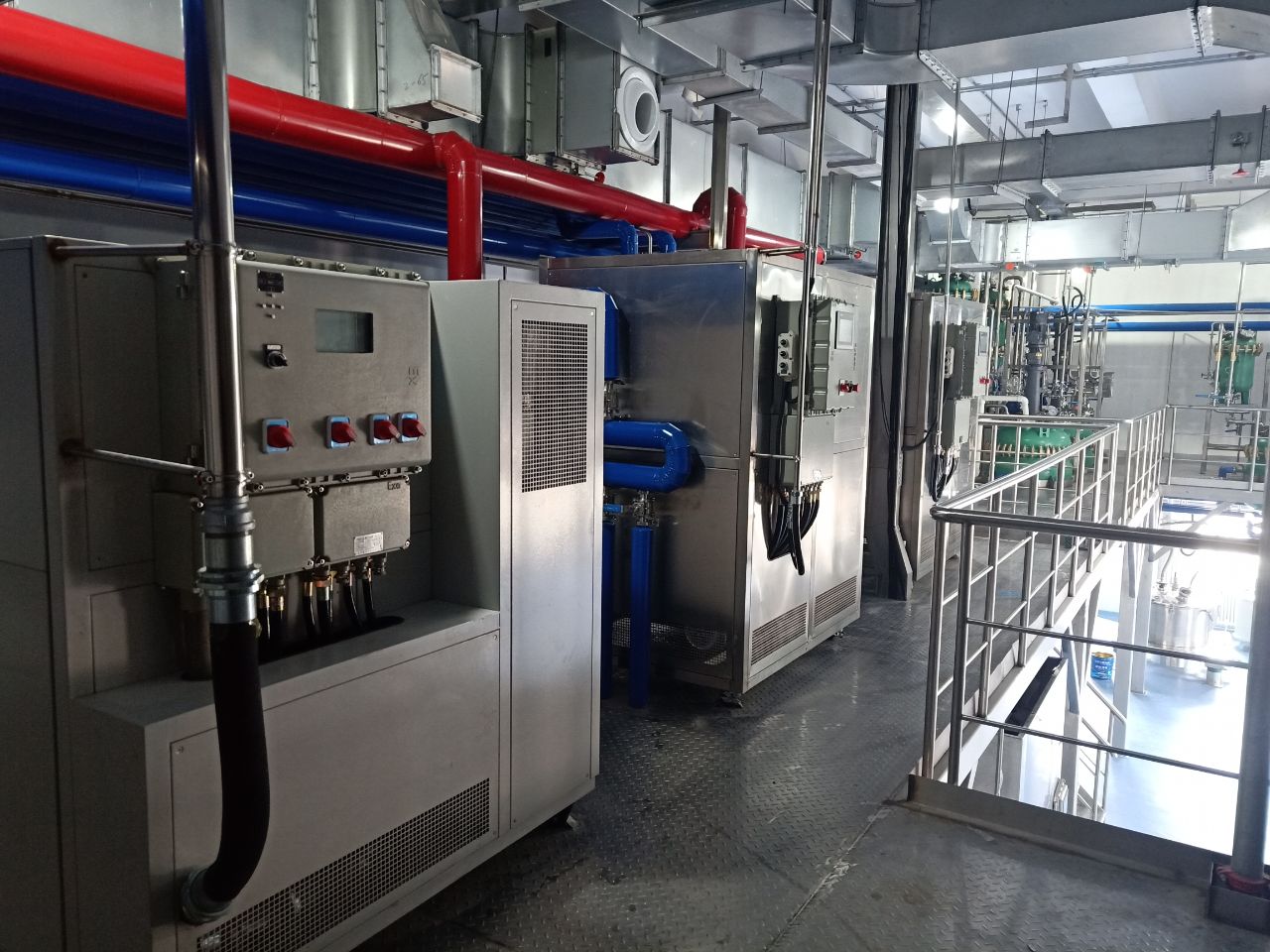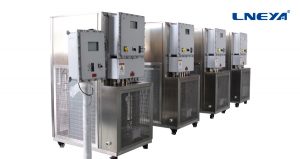The role of temperature control system TCU in chemical and pharmaceutical reactor
The temperature control of the reaction kettle in drug research and development and chemical experiments, as well as the temperature control in small-scale experimental production and industrial production processes, require highly dynamic temperature control systems. When controlling the temperature of the reaction kettle, it is necessary to quickly and efficiently compensate for the absorption and exotherm of the chemical reaction.
Many reactors mix or chemically react materials, often accompanied by exothermic or endothermic processes. This part of heat needs to be balanced by a device to maintain a certain temperature range to ensure normal production. ,
Reactor temperature control requires different heating and cooling rates according to different reaction material characteristics. The working environment of some reactors has special requirements, which affects temperature control. How to accurately control the temperature of the reactor needs to be on site Understand the process conditions, such as explosion-proof treatment, or the control part is separated from the mechanical part.
Most temperature control applications involve stainless steel and glass reactors. The stainless steel reaction kettle is more durable, while the glass reaction kettle allows users to observe the reaction process in the kettle body. The reaction kettle generally has an internal cavity, and the materials to be temperature controlled are placed in this cavity. The internal cavity is surrounded by a jacket through which heat transfer oil can pass. The temperature control system is connected to the jacket of the reactor. In order to control the temperature of the reaction kettle, the temperature control system continuously drives the heat transfer oil into the jacket of the reaction kettle through the circulation pump. The sudden temperature change inside the reactor will be compensated by the rapid heating and cooling of the temperature control equipment to achieve dynamic balance. The thermal oil is heated and cooled in the temperature control equipment.
The LNEYA reaction kettle temperature controller TCU uses concentrated heat energy in the kettle to control the temperature of the process, ensuring that only one type of thermally conductive liquid flows into the jacket of the reaction vessel, reducing the problem of thermal reaction delay. Through three-point temperature sampling (material temperature point, temperature control system outlet and inlet temperature), there is no built-in expansion tank, which ensures that the heat absorption and heat release process will not affect the efficiency of the heat transfer oil. Due to the special type of the production workshop, we accept the customization of explosion-proof models, just need to tell us the temperature control effect you want to achieve.
Recomendaciones relacionadas
-
Why can ethylene glycol chillers be used for polymerization and coupling reactions
8931. Polymerization heatingGenerally, the raw materials ofpolymerization reaction are some flammable solvents, and heating up quickly maycause local temperature to be too high and cause accidents. Everypolymerization reaction has its proper react...
Ver detalles -
What should I pay attention to when using the reactor for chilling and cooling?
1104When using the reactor chilling and cooling and cooling device, users need to pay attention to their refrigeration and heating operations. Pay attention to the operation within a reasonable temperature range to avoid excessive temperature and pres...
Ver detalles -
Sistema farmacéutico WFI circulador/enfriador de agua de refrigeración de baja temperatura
828El sistema WFI (Water for Injection) de la industria farmacéutica es un sistema de agua altamente purificada que proporciona agua estéril que cumple estrictas normas de calidad para la producción de medicamentos y formulaciones (como las inyecciones). ...
Ver detalles -
The Reasons of Frosting on Ultra low Temperature Recirculating Chillers
1043Frosting will appear when many users take advantage of ultra low temperature recirculating chillers, while some are not. It is confusing and whether it is relevant to refrigeration.First of all, why does ultra low temperature recirculating chiller...
Ver detalles
 LNEYA Enfriadoras industriales Fabricante Proveedor
LNEYA Enfriadoras industriales Fabricante Proveedor












